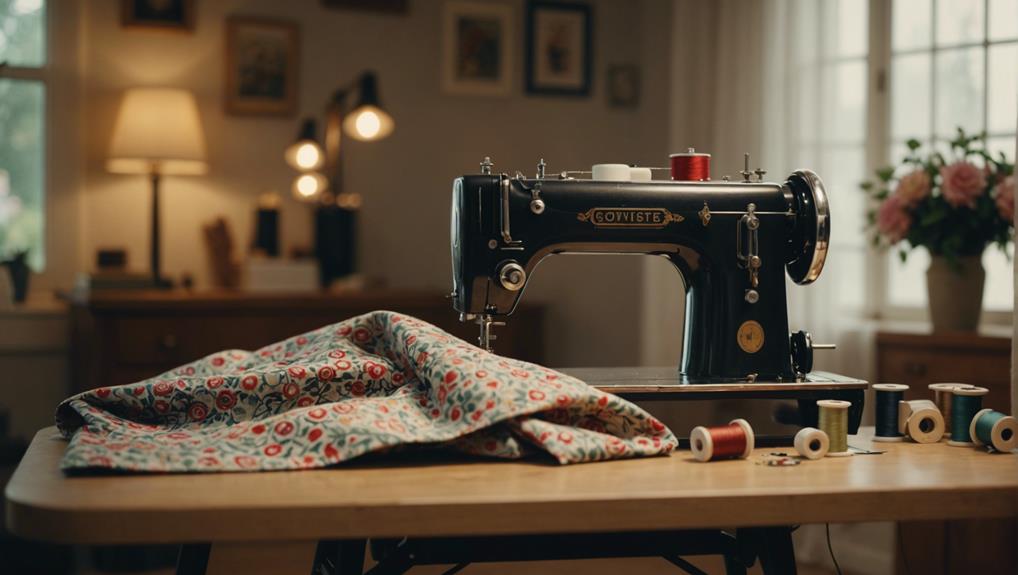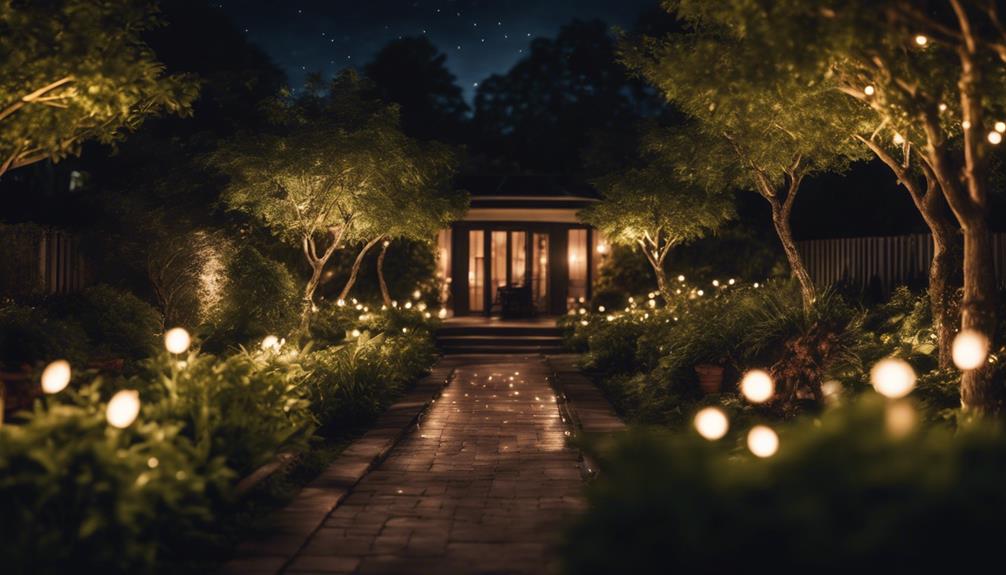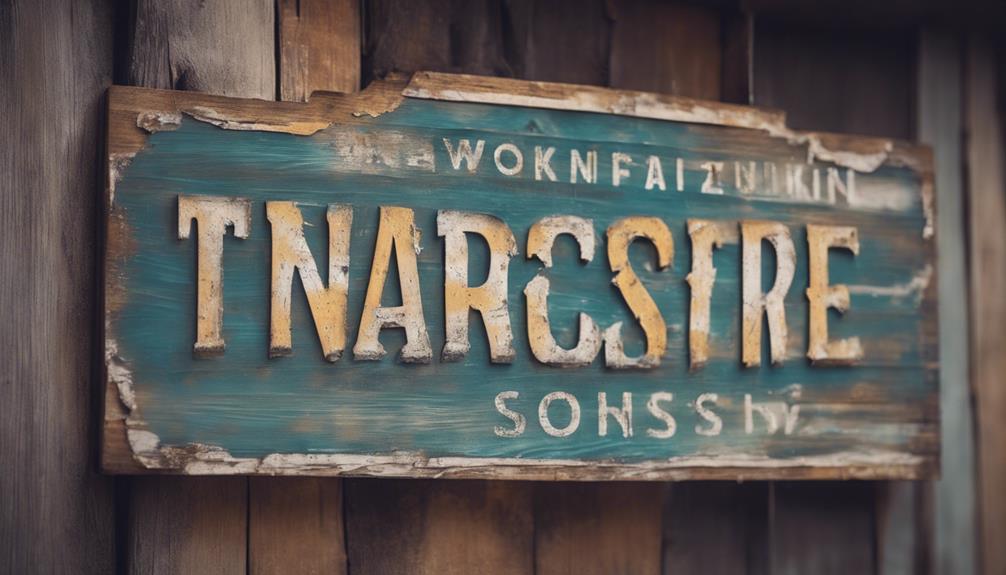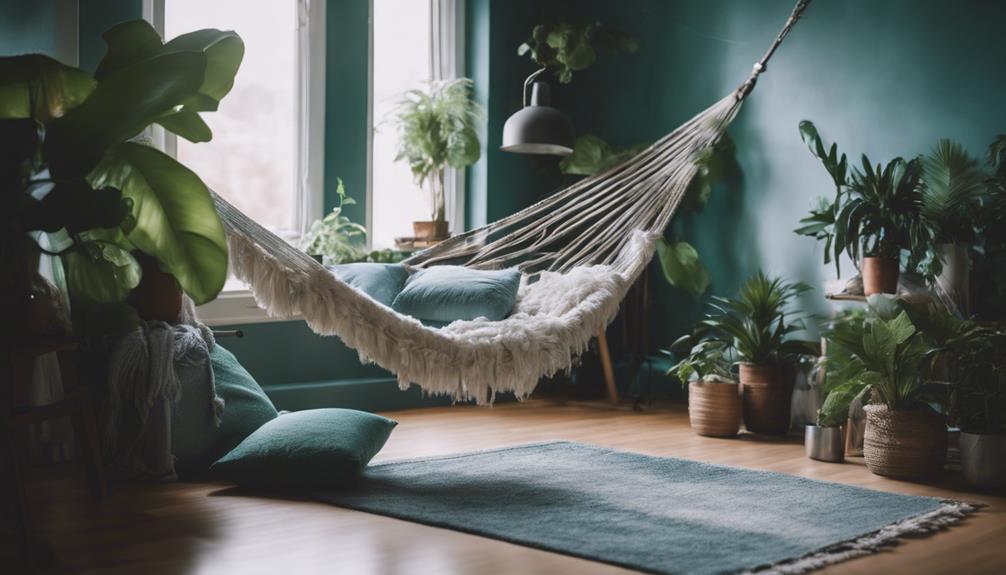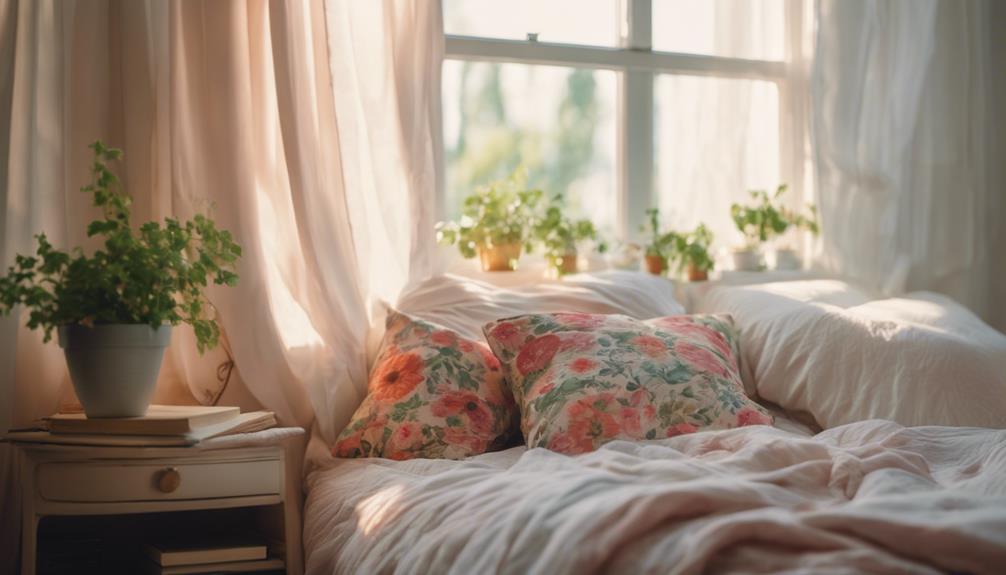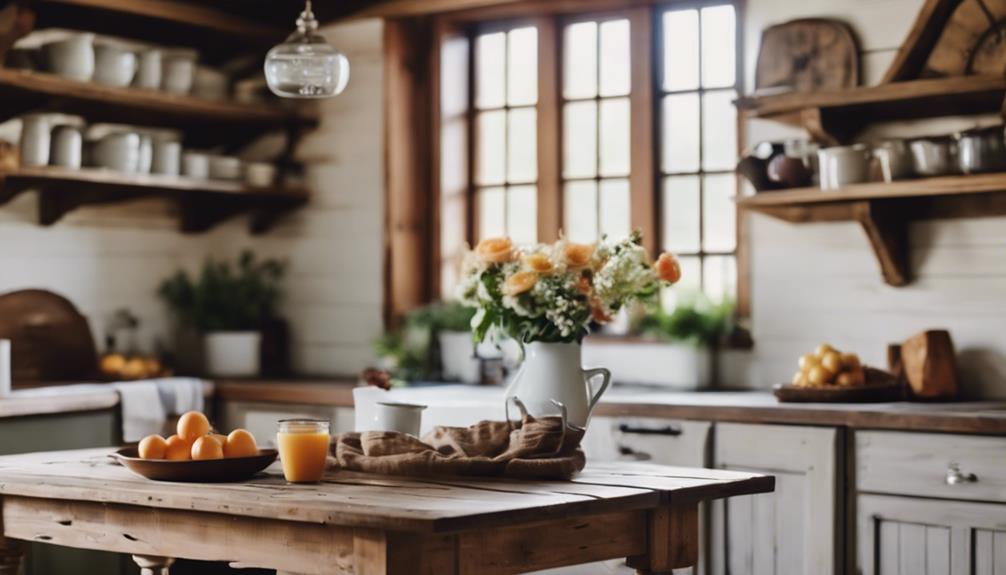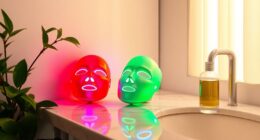You can absolutely use home decor fabric for clothing, which offers unique textures and designs. It is important to consider factors such as weight, drape, and pre-washing before starting your project. When selecting the right fabric, think about fabric weight, durability, and care instructions. Fabrics like linen, silk, and cotton can be excellent choices. Sewing with thicker materials may require special techniques. Additionally, color coordination and sewing basics are important factors to consider. These tips can assist you in creating fashionable clothing pieces using home decor fabric. Further advice can improve your fabric selection and garment creation.
Key Takeaways
- Consider weight and drape for suitable garment construction.
- Pre-wash to prevent shrinkage and understand fabric behavior.
- Be prepared for special construction techniques and equipment.
- Ensure fabric's breathability and weight align with clothing needs.
- Verify care instructions for washing and maintenance requirements.
Pros and Cons of Using Home Decor Fabric

When contemplating the use of home decor fabric for clothing projects, it's crucial to evaluate the advantages and disadvantages to make informed decisions. Home decor fabrics offer unique textures, prints, and designs that can enhance the aesthetic of your garments.
Linen from home decor fabrics, for instance, can result in comfortable and opaque pants with a luxurious feel. Silks from home decor provide beautiful textures and prints, ideal for creating elegant and sophisticated pieces. Additionally, cotton home decor fabrics are recognized for their durability and bold prints, making a statement in clothing items.
One of the advantages of utilizing home decor fabrics for clothing is that they can be more cost-effective, allowing you to experiment with new patterns and designs without a significant investment. However, it's important to bear in mind that these fabrics may be heavier or less breathable compared to traditional clothing fabrics, which could impact the comfort and wearability of the final garment.
Factors to Consider Before Using
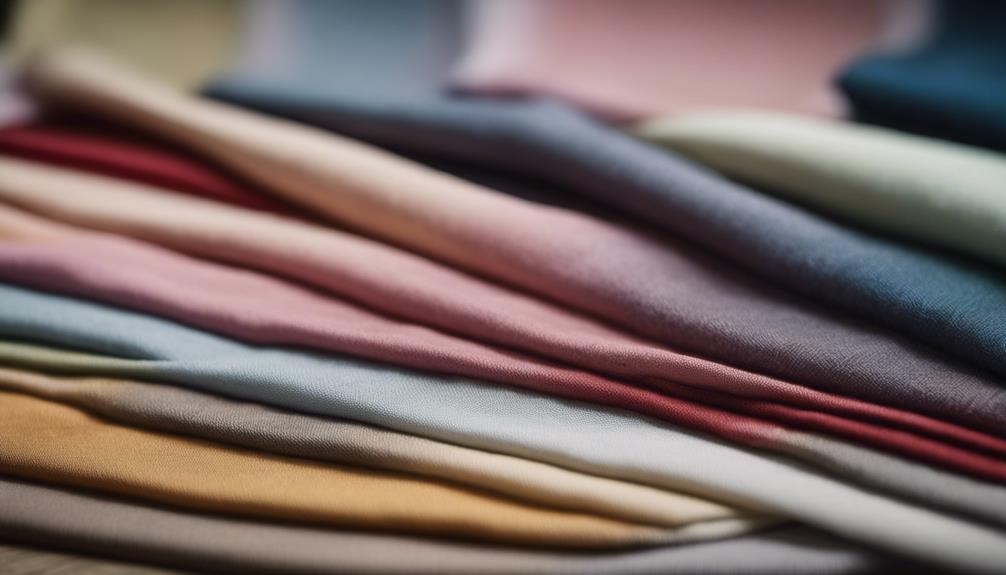
Before incorporating home decor fabric into your clothing projects, it's important to carefully consider several key factors.
- Weight and Drape: Home decor fabrics, like upholstery fabric, are often heavier and more structured than traditional garment fabrics. Consider the weight and drape of the fabric to make sure it suits the desired clothing item.
- Pre-Washing: To prevent shrinkage and assess suitability, pre-wash the home decor fabric before cutting and sewing. This step can also help you understand how the fabric behaves.
- Special Techniques: Some home decor fabrics may require special sewing techniques or equipment for successful garment construction. Be prepared to adapt your sewing methods to accommodate the unique properties of the fabric, especially if it differs significantly from standard garment fabric.
Considering these factors will help you make informed decisions when using home decor fabric for clothing projects.
Tips for Selecting the Right Fabric
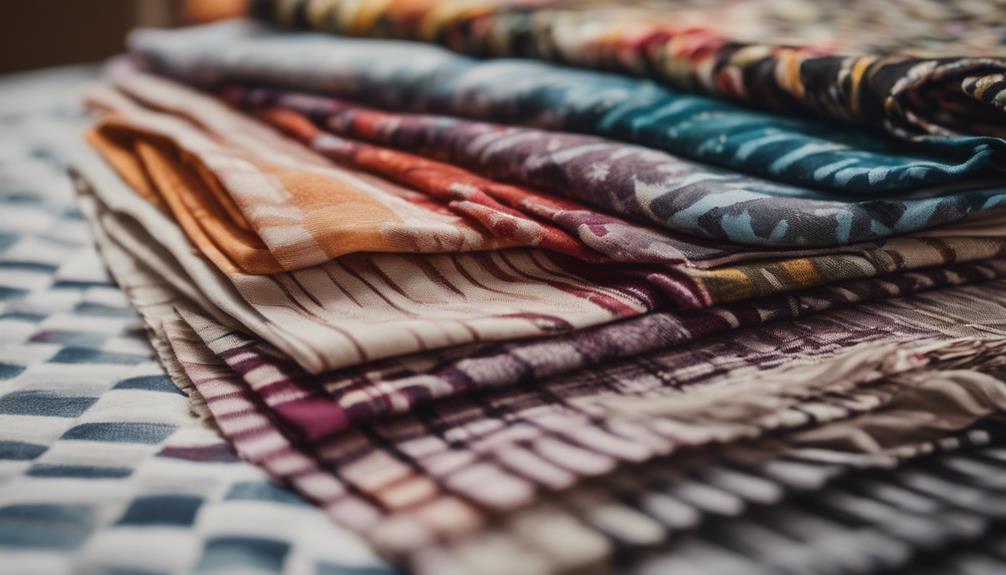
When selecting home decor fabric for clothing, make sure to consider the weight and texture for comfort.
Look for unique patterns and designs that add a bold aesthetic to your garments.
Double-check care instructions to confirm the fabric can withstand washing and maintenance requirements.
Fabric Type Considerations
To choose the right fabric for your clothing project using home decor materials, consider the weight and structure of the fabric to make sure it aligns with your desired garment's characteristics. When selecting fabric from a fabric store, keep the following in mind:
- Weight and Structure: Opt for fabrics that have the appropriate weight and drape for the style of clothing you want to create.
- Durability: Look for durable home decor fabrics that can withstand regular wear and tear to guarantee longevity.
- Textures and Prints: Explore fabrics with unique textures and prints to add visual interest and personality to your garments.
Color and Pattern Selection
Consider the scale of the pattern and your skin tone when selecting home decor fabric for clothing to guarantee a harmonious garment design. Choose colors that complement your skin tone and align with your personal style. Opt for bold or subtle patterns depending on the desired aesthetic of the garment.
Mixing and matching different patterns from home decor fabrics can result in unique and eye-catching clothing pieces. Pay attention to the fabric's texture and how it interacts with the chosen color and pattern for a cohesive look in clothing items.
Best Home Decor Fabrics for Clothing
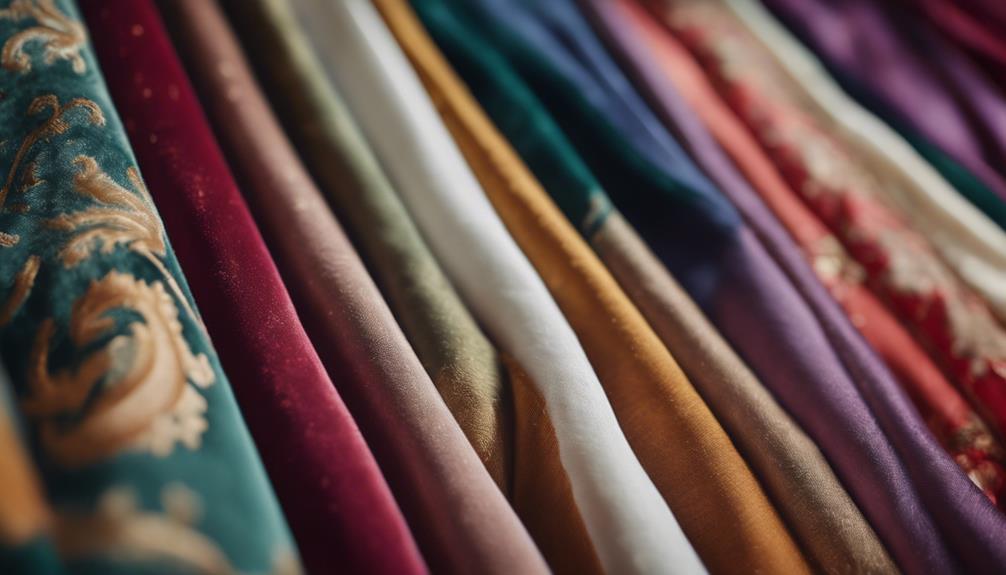
For creating stylish clothing pieces with unique patterns and textures, consider using home decor fabrics like cotton chintz and silk dupioni. These fabrics offer a wide range of benefits when it comes to creating fashionable garments. Here are three top choices for home decor fabrics that work well for clothing:
- Cotton Chintz: Known for its glossy finish and vibrant colors, cotton chintz is a great option for blouses and skirts. Its durability and structure make it ideal for creating statement pieces that will last.
- Silk Dupioni: This luxurious fabric has a crisp texture and subtle sheen, perfect for elegant jackets or evening wear. The rich colors and slight irregularities in the weave add depth to any outfit.
- Velvet: Velvet is a plush and soft fabric that can add a touch of sophistication to your clothing. It drapes beautifully, making it a great choice for creating dresses or tops with a luxurious feel.
How to Work With Thick Fabrics
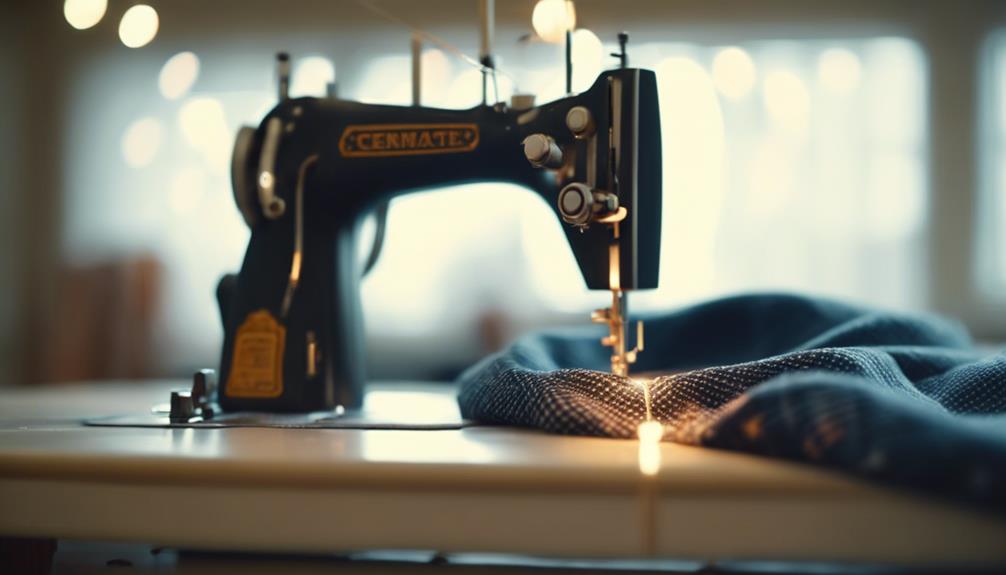
When working with thick fabrics, make sure to use a heavy-duty needle to prevent breakage and guarantee smooth sewing.
Consider attaching a walking foot to your machine for even fabric feeding.
Adjust tension and stitch length accordingly to accommodate the thickness of the fabric.
Sewing Thick Fabrics
Sewing thick fabrics such as home decor fabric requires a heavy-duty sewing machine equipped with a robust motor to handle the material's density effectively. When working with these fabrics, here are some essential tips to help you navigate the process smoothly:
- Use appropriate needles like denim or heavy-duty needles to prevent breakage.
- Adjust the presser foot pressure on your sewing machine to accommodate the fabric's thickness.
- Consider using a walking foot attachment to guarantee even feeding and prevent shifting or puckering during sewing.
Choosing Proper Needles
To effectively work with thick fabrics like home decor materials, make sure you select needles designed specifically for heavy fabrics to maintain smooth sewing. Needles labeled as 'denim' or 'jeans' needles are ideal for tackling thick fabrics found in the home décor department, offering durability and strength. Opting for a larger needle size, such as 16 or 18, can help penetrate densely woven home decor fabrics without causing damage.
Sharp needles are recommended for sewing through thick fabrics to guarantee clean and precise stitches. Proper needle selection is vital for achieving professional-looking results, ensuring smooth stitching and seam quality. Make sure to choose the right needles for the job to make your sewing experience with thick fabrics a breeze.
Adjusting Machine Settings
Adjust the presser foot pressure on your sewing machine to guarantee smooth stitching when working with thick home decor fabrics. When dealing with dense fabrics, such as those used in home decor projects, it's vital to adjust your machine settings accordingly.
Here are some tips to help you work with thick fabrics on your sewing machine:
- Adjust the presser foot pressure: Make sure even pressure is applied to the fabric for smooth stitching.
- Use a heavy-duty needle: Opt for a heavy-duty or denim needle to prevent breakage when sewing through multiple layers of thick fabric.
- Lengthen the stitch: Increase the stitch length to prevent puckering and ensure proper stitch formation on dense home decor fabrics.
Styling Tips for Home Decor Clothing

When incorporating home decor fabric into your clothing, consider how to style it effectively to showcase its unique texture and aesthetic. Fabrics used in home decor are often heavier and can add an interesting dimension to your clothing pieces.
To style home decor clothing, balance the bold prints and designs of the fabric with simpler pieces to let the fabric stand out. Pair a statement home decor fabric skirt with a plain top or vice versa to create a harmonious look. Fabrics like linen and silk, commonly found in home decor, offer luxurious options for comfortable clothing that can be dressed up or down.
When repurposing home decor fabrics for clothing, think outside the box and experiment with unexpected combinations to create a one-of-a-kind fashion statement. By considering the weight, structure, and design of the fabric, you can confidently incorporate home decor fabric into your wardrobe for a unique and stylish look.
Sewing Techniques for Beginners
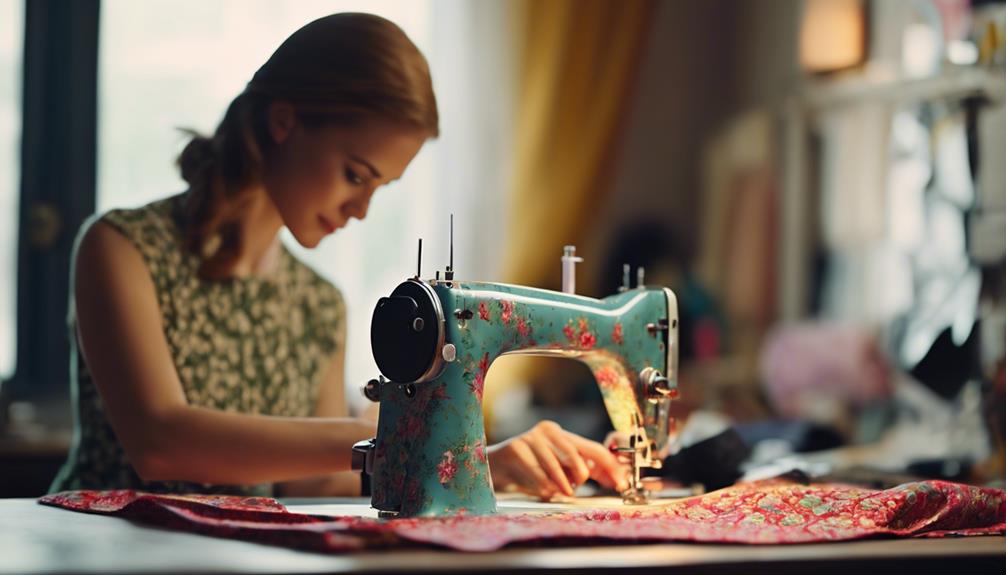
Consider starting your sewing journey with some basic techniques that will help you confidently create garments using home decor fabrics. Here are some essential sewing techniques to get you started:
- Choosing the Right Needle: Make sure you have the correct needle for your fabric type. Home decor fabrics like linen may require a heavier needle, while delicate silks will need a finer needle to prevent snags and runs.
- Seam Finishing: Learn basic seam finishing techniques like zigzag stitching or serging to prevent fraying and give your garments a professional look.
- Pressing and Ironing: Proper pressing and ironing can make a significant difference in the final appearance of your garment. Use a home dec store iron to press seams open and create crisp edges for a polished finish.
Care and Maintenance of Fabric
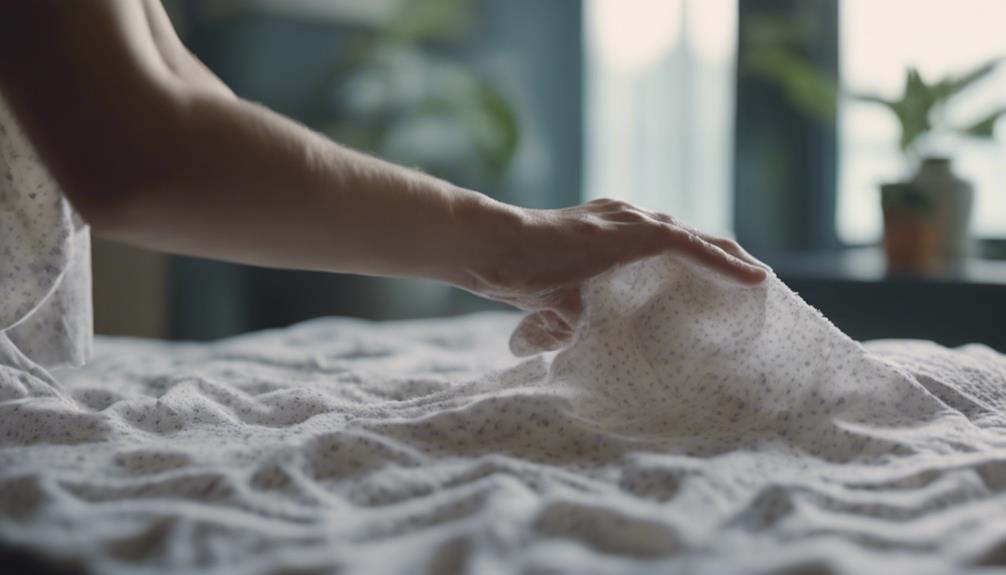
To maintain the quality and appearance of home decor fabrics used in clothing, follow the fabric care instructions provided by the manufacturer. Whether your garment is made of faux suede or features an invisible zipper, proper care is essential. Home decor fabrics may require special attention such as dry cleaning or spot cleaning to guarantee longevity. Some fabrics come pre-treated with stain-resistant finishes, impacting the cleaning methods you can use.
It's vital to adhere to the manufacturer's guidelines to prevent damage during cleaning. Regular maintenance practices like vacuuming or dusting can help extend the lifespan of these fabrics in clothing. Be cautious with cleaning agents, opting for gentle solutions to avoid harming the fibers or finishes. By following these care tips, you can enjoy your home decor fabric clothing pieces for years to come.
Frequently Asked Questions
Can You Use Furniture Fabric for Clothes?
Yes, you can use furniture fabric for clothes. Fabrics like linen or silk from home decor collections offer unique textures and prints for garments. Linen creates comfy pants, while silk provides luxurious textures.
Cotton home decor fabrics are durable and feature bold prints, suitable for statement pieces. Repurposing home decor fabric for clothing can be economical for testing new patterns and designs.
Embrace the versatility of furniture fabric in your wardrobe!
Can You Use Any Fabric to Make Clothes?
Yes, you can use a variety of fabrics to make clothes, each offering unique benefits.
Fabrics like linen provide comfort and opacity for pants, while silks offer luxurious textures.
Cotton fabrics are durable with bold prints for versatile garment projects.
Home decor fabrics can be a cost-effective way to experiment with new designs.
Can You Use Tapestry Fabric for Clothes?
Yes, tapestry fabric can be used for clothing, providing unique textures and patterns for visually striking garments. Its heavy and structured nature makes it ideal for outerwear like coats and jackets. The durability of tapestry fabric guarantees longevity, perfect for creating statement pieces.
Be mindful of pattern placement to showcase design elements effectively. Special handling during cutting, sewing, and finishing is necessary due to its thickness and texture.
What Is the Difference Between Upholstery Fabric and Clothing Fabric?
Upholstery fabric differs from clothing fabric in key ways. Upholstery fabric is heavier and more durable, intended for home decor projects, while clothing fabric is softer and breathable, designed for comfortable wear.
Upholstery fabric may have finishes unsuitable for skin contact, unlike clothing fabric. Clothing fabric is crafted for garments, ensuring flexibility and comfort for the wearer.
These distinctions highlight the unique purposes and qualities of each fabric type.
Conclusion
To sum up, using home decor fabric for clothing can be a creative and cost-effective option, but it comes with its own set of challenges. Consider factors like fabric weight, drape, and care instructions before diving in.
Choose the right fabric for your project and learn how to work with thick fabrics effectively. With the right techniques and styling tips, you can create unique and stylish clothing pieces that stand out.
Remember to care for your fabric properly to make your creations last.
